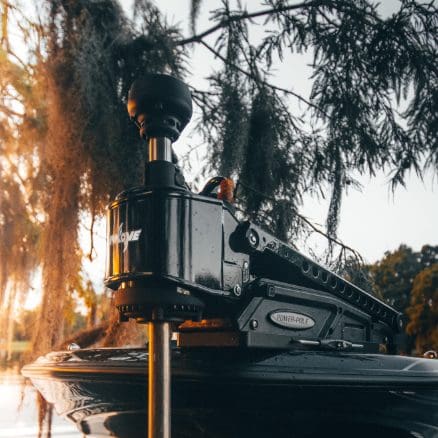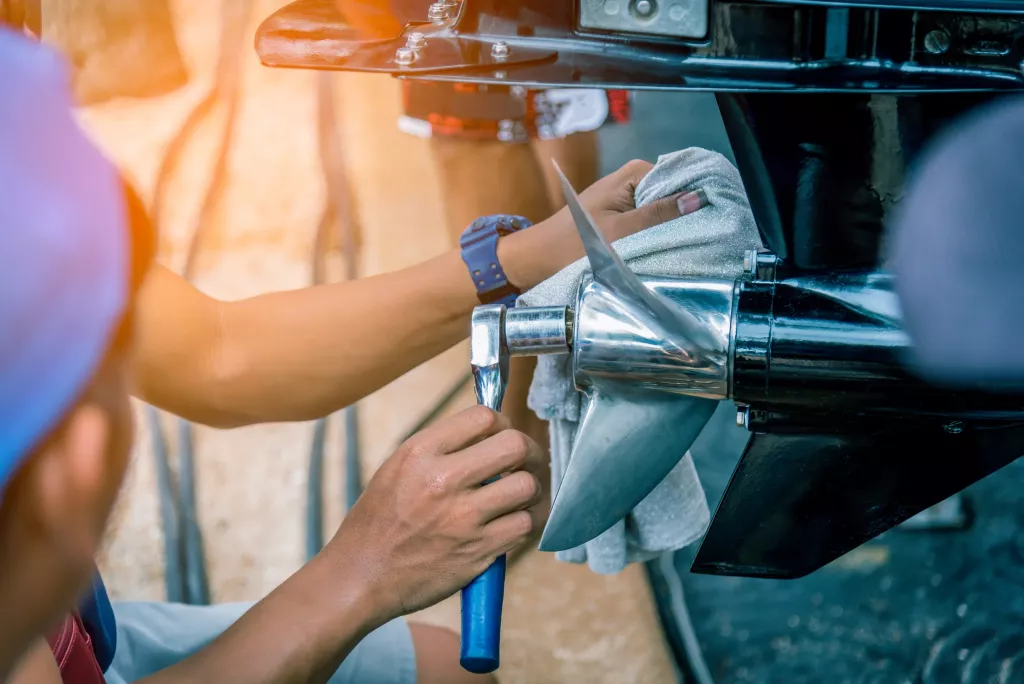Thinking about tackling your own boat rigging? You’re not alone—but when it comes to boat DIY rigging projects, you might be making a costly mistake by not letting pros handle them.
Unfortunately, we see the results of these DIY attempts often at Black Label Marine Group. And more often than not, it ends with damage, delays, or dollars down the drain. Here’s a breakdown of the most common rigging projects boaters try to handle themselves—and why you’re better off trusting the pros.
1. Trolling Motor Installations
On the surface, mounting a trolling motor looks simple. But under the deck? It’s a whole different story.
What DIYers get wrong:
- Incorrect mounting angles or locations
- Weak or poorly sealed holes in the deck
- Undersized wiring that causes power loss
- No breaker or circuit protection
Why it matters:
Improper installs lead to shorted systems, water intrusion, or motors that just won’t track correctly.
The Pro Difference:
At Black Label, we use precision templates, marine-grade wiring, proper circuit breakers, and sealed rigging for long-term performance.

2. Electronics & Multi-Device Integration
Installing a single fishfinder is one thing. Networking a sonar, chartplotter, radar, VHF, and stereo system together? That’s a nightmare without experience.
Where DIY fails:
- Mixing incompatible systems
- Failing to use NMEA 2000 or Ethernet networks properly
- Voltage drops and ungrounded interference
Why it matters:
Without integration, your electronics can’t “talk” to each other—making features like autopilot and GPS sync useless.
The Pro Difference:
We build helm layouts that are clean, functional, and connected—future-proofing your investment.
3. Power Pole & Jack Plate Installs
These transom-mounted accessories are popular with inshore anglers—but only if installed correctly.
Where things go wrong:
- Poor bracket alignment
- Drilling into a cored transom without proper sealing
- Leaky hydraulic fittings
Why it matters:
Damage to your transom isn’t just expensive—it could be dangerous. And misaligned gear doesn’t perform.
The Pro Difference:
Our team ensures tight seals, proper torque specs, and smooth function with every install.

4. LED & Accent Lighting
Adding LED deck or underwater lighting is a common upgrade—but most DIY wiring jobs are, frankly, unsafe.
DIY mistakes:
- Non-marine wire or switches
- Exposed, unsealed connections
- Overloaded power systems
Why it matters:
Besides looking unprofessional, improper lighting installs can drain batteries or even start fires.
The Pro Difference:
We use marine-rated components, fuse-protected switches, and waterproof connections for stunning, safe lighting setups.

5. Battery Banks & Onboard Charging
Many DIY installs skip important safety features when adding extra batteries or chargers.
What’s often missing:
- Isolation switches
- Fuses and breakers
- Proper cable sizing
- Smart charger programming
Why it matters:
Improper charging setups can shorten battery life—or worse, cause onboard fires or equipment failures.
The Pro Difference:
Our battery rigs are installed to industry standards and labeled clearly.
Bonus: Signs Your Boat Was Poorly Rigged
If you’ve bought a used boat or tried a DIY job in the past, look out for these warning signs:
- Loose or hanging wires
- Electrical tape instead of shrink wrap
- No labels on switches or breakers
- Corrosion on battery terminals
Sound familiar? Bring your boat in—we’ll clean it up right.
Conclusion: Leave the Rigging to the Pros
At Black Label Marine Group, our rigging team doesn’t just install—we engineer. Every bolt, wire, and fuse is placed with precision to keep you running smoothly and safely on the water.
🧰 Ready for a Rigging Upgrade
Let’s talk. Whether you’re re-rigging your center console or building out your offshore dream machine, our experts have you covered. Reach out to our service department today.
Boat rigging refers to the installation and integration of hardware, electronics, electrical systems, and structural components on a boat. Proper rigging ensures safety, reliability, performance, and compliance with marine standards. Poor rigging can lead to system failures, leaks, or even accidents.
While it’s possible to install a trolling motor on your own, many DIY installs go wrong due to incorrect placement, wiring issues, or lack of waterproofing. These mistakes can cause the motor to fail or damage your electrical system. A professional ensures a clean, sealed, and properly powered install.
DIY marine electronics wiring is often unsafe if done without the proper tools, knowledge, and materials. Common issues include voltage drops, poor connections, and unshielded wiring that can cause interference or system failure. Professionals use marine-grade components and follow ABYC standards.
Signs of poor rigging include:
Loose or unprotected wires
Use of household (non-marine) parts
No fuses or isolation switches
Electrical tape instead of heat-shrink
If you’re unsure, a professional inspection can identify and correct hidden issues.



